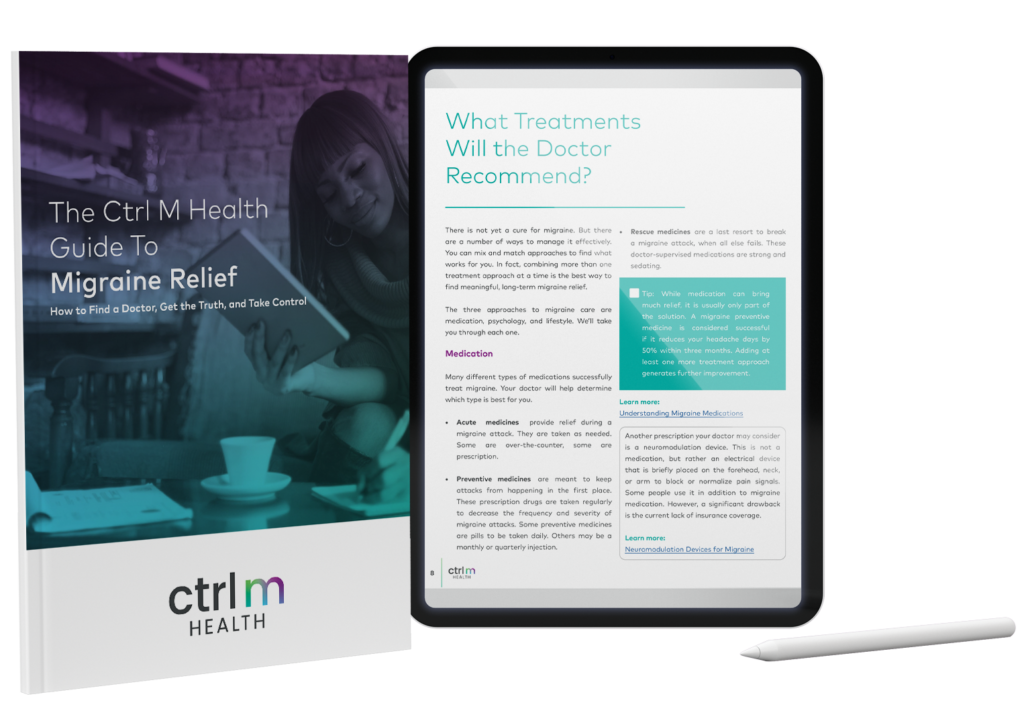Splash your face with cold water. Cough. Hold your breath for half a minute. All of these actions have one thing in common: They stimulate the vagus nerve. Recently, a device has been developed to stimulate the vagus nerve in a controlled way. This device improves the severity and frequency of both migraine and cluster headache. Vagus nerve stimulation (VNS) is a promising new area of treatment for head pain, and highlights the importance of understanding the mysterious vagus nerve.
What is the vagus nerve?
The term “vagus” comes from the Latin word for “wandering.” Its name captures this cranial nerve’s complex, vagabond course from the brainstem to the throat, lungs, heart, stomach, and all the way down to the colon. The function of the vagus nerve is diverse. It receives signals of various body sensations such as hunger, fullness and nausea, many of which never register in our conscious mind.
Importantly for headache medicine, fibers from the vagus nerve also intertwine with brain structures responsible for regulating how we process pain. Signals firing through branches of the vagus nerve activate the parasympathetic nervous system, which balances out our “fight or flight” response by slowing rapid heartbeats, calming fast breathing, and helping the brain inhibit pain.
How is vagus nerve stimulation used to help people with migraine and cluster headache?
The discovery of how VNS helps head pain occurred by chance. Patients who were using vagal nerve stimulators to treat other diseases, such as depression or seizures, discovered their head pain also improved. The evidence was eventually enough to launch clinical trials.
Traditionally, VNS devices were implanted directly into the chest. However, to avoid surgery-related complications, researchers developed a hand-held, non‐invasive vagus nerve stimulation (nVNS) device that people can apply to the skin themselves. The device is applied to an area on either side of the neck for two minutes, during which time the device sends a low-voltage electrical signal to stimulate a specific branch of the vagus nerve.
Studies proceeded to find the following results:
- Acute treatment: Large, randomized studies found that participants with episodic migraine (less than 15 days per month) using the nVNS device had statistically significant improvement in pain freedom and pain relief as compared to those using a sham (placebo) device. Similar results were found for participants with episodic cluster headache (cluster attack periods lasting between one week and one year, and separated by one month or more). The nVNS device was not effective for those with chronic cluster headache.
- Preventive treatment: A study for the prevention of cluster headache showed that participants using the nVNS device had a significant reduction in the number of attacks per week compared to those who did not use the device. The benefit was best in those who used the nVNS device in addition to other standard of care therapies for cluster headache treatment. A separate study found that the device is probably effective for preventing episodic migraine.
Overall, the evidence suggests that the nVNS device can provide a moderately effective, tolerable, and safe acute and preventive treatment option for episodic migraine and episodic cluster headache, with or without additional therapies. Studies found that using the nVNS device did not have serious side effects. The most common side effects were rash, pain, redness, discomfort at the application site, and dizziness. This device is now FDA-approved for the preventive and acute treatment of migraine and cluster headache, and is sold under the brand name gammaCore©.
There is still much to discover about the role of the vagus nerve in head pain, and researchers are still uncovering the full potential of VNS for treating disease. Studies are ongoing in the treatment of mood disorders, asthma, fibromyalgia, movement disorders, dementia, and recovery from stroke and traumatic brain injuries. Our current knowledge of the vagus nerve and use of VNS for migraine and cluster headache is a stepping stone to what is possible.
The Care Tuner Guide to Migraine Relief
Untreated migraine tends to worsen over time, so if you suspect you have migraine, it’s important to get help. We’ve compiled everything you need, including what to expect, pitfalls to avoid, and what you can do right now to get relief.






